This was the first time to make pastry cream and that turned out to be a success. I followed the recipe step by step and watched the video carefully and it went smooth just like the cream. Thank you!
Welcome, dessert lovers, to a sweet recipe that's all about enhancing your baking delights! Today, we're diving into the world of traditional pastry making and preparing a classic that goes by many names - Pastry Cream, Custard Cream, Creme Patissiere. This creamy delight is a quintessential part of many confections and is universally loved for its versatility and delicious taste.
Imagine your favorite cream-filled treats, like cream puffs, éclairs, Dorayaki, or Takiyaki. At their heart is a luscious, smooth custard cream that lends a harmonious blend of flavors and textures. But today, we're giving it a unique spin - we're making our custard cream dense enough to elegantly rest on a cake without sliding off, adding that extra wow factor to every bite.
Ever wondered what makes those bakery cakes so luscious? It's this hidden gem inside, the creamy custard filling that not only elevates the taste but also the overall texture of the dessert. As you combine the eggs, vanilla extract, and sugar, and warm up milk with fragrant lemon zest, you can almost sense the delightful sweetness that's about to unfold. The aroma filling your kitchen is comforting and exciting at the same time, hinting at the sweet masterpiece you're about to create.
This recipe journey isn't just about the final product; it's about the process too. It's about the infusion of flavors, the slow, careful thickening of the mixture, and the anticipation of seeing it transform into a rich, velvety custard.
So, are you ready to level up your cake baking skills with this Thick Custard Cream for Cakes? It's more than just a recipe - it's an exciting baking journey that'll result in a versatile, mouthwatering custard cream, ready to turn any ordinary cake into an extraordinary dessert. Let's embrace this delightful culinary adventure and whip up this sweet treat together!
JUMP TO:
INGREDIENTS:
Milk: Quality is paramount. Choose full-fat milk for a richer and creamier custard. Full-fat milk, with a higher fat content than reduced or low-fat versions, will enhance the custard's luxuriousness. Organic milk is a superior choice, offering a cleaner and fresher taste. It should also be as fresh as possible - avoid using milk close to its expiry date, which could negatively affect the custard's taste.
NO MILK: For a dairy-free or vegan alternative, replace the milk with a non-dairy milk like almond or coconut milk and use an egg substitute instead of the egg yolk. However, please note that these substitutions will affect the final taste and texture of your custard. The cornstarch can also be replaced by other thickeners like flour or arrowroot, but the quantities may need to be adjusted and it can affect the final texture.
Cornstarch: Cornstarch is better than regular flour in this case because it has a more neutral taste. This is what thickens your custard.
Lemon Zest: Choose organic, unwaxed lemons for zesting, as non-organic lemons often have pesticide residues on their skin and waxed lemons can give a strange flavor to your custard. The lemons should be firm, bright in color, and feel heavy for their size.
Vanilla Extract: This ingredient adds a wonderful depth of flavor to the custard. Always choose pure vanilla extract over the imitation variety. Vanilla beans can provide an even more pronounced vanilla flavor. Use a sharp knife to split the bean lengthwise, scrape out the seeds, and use them in place of the extract.
MAIN STEPS:
Infusing the Milk: Heating the milk to just before boiling point allows it to absorb the flavors of the lemon zest and vanilla. However, be cautious not to let it come to a full boil as this could affect the final texture of your custard, making it grainy or causing it to separate.
Sifting the Starch: Sifting the starch into the egg mixture not only ensures a smoother texture but also prevents the formation of lumps in your custard. The sifting process aerates the starch, which helps to evenly distribute it throughout the mixture.
The Tempering Process: Tempering, the process of gradually adding warm milk to the egg mixture, is a critical step. This technique prevents the eggs from scrambling when they come into contact with the hot milk. To temper correctly, add the milk very slowly while continuously stirring the egg mixture.
Cooking the Custard: Cooking the custard on low heat and continuously stirring ensures that the custard doesn't burn or stick to the pot's bottom. It also provides the cornstarch sufficient time to activate and thicken the custard. Too high heat or lack of stirring can lead to a lumpy custard or a burnt bottom.
Cooling and Setting the Custard: Proper cooling is essential for custard consistency. Allowing the custard to cool at room temperature before refrigerating will prevent a rapid drop in temperature, which can cause condensation that could result in a thinner custard. Covering the custard with cling film touching its surface prevents a skin from forming on the custard as it cools.
SERVED WITH:
Starter: Puff Pastry Tarts (France): Light and flaky puff pastry tarts filled with a dollop of custard cream make a delightful starter. This is a traditional French pastry technique, using simple, quality ingredients.
Side Dish: Banana Pudding (United States): This popular Southern dish features layers of vanilla wafers, bananas, and custard cream. The sweet creaminess of the custard pairs beautifully with the tanginess of the bananas.
Main Course: Quiche Lorraine (France): A savory custard-filled tart with bacon, cheese, and onion. Though not a traditional use of sweet custard cream, it can add a unique twist to this classic French dish.
Second Course: Apple Strudel (Austria): This classic Austrian dessert has a crispy crust, apple filling, and is often served with warm custard cream poured over the top.
Dessert: Trifle (United Kingdom): This classic British dessert is made from layers of sponge cake, custard cream, fruit, and whipped cream. The custard layer provides a luscious creaminess.
Cake: Boston Cream Pie (United States): Despite its name, this is a cake, not a pie! It's made with two layers of sponge cake and a middle layer of custard cream, topped with a chocolate glaze.
Drink: Nutella Eggnog (United States): This creamy holiday beverage is a sweetened dairy-based drink traditionally made with Nutella, milk, cream, sugar, whipped egg whites, and egg yolks, which can be substituted with custard cream for a richer flavor.
ALTERNATIVES:
Dessert: Crème Brûlée (France): This is a classic French dessert that combines heavy cream, egg yolks, sugar, and vanilla, which are the base ingredients for custard cream. It is then baked and topped with a layer of hardened caramelized sugar.
Dessert: Flan (Spain): Another classic dessert, this time from Spain, uses the ingredients in custard cream. It is a baked custard dessert topped with caramel sauce, providing a delightful contrast of textures.
Dessert: Tiramisu (Italy): An Italian classic, Tiramisu uses custard cream as part of its filling. Made with layers of ladyfingers soaked in coffee, custard cream, and dusted with cocoa powder, it's a beloved dessert around the world.
Dessert: Eton Mess (UK): This traditional English dessert uses vanilla, cream, and sugar from the custard cream recipe to make whipped cream, which is then mixed with strawberries and meringue.
Dessert: Floating Islands (France): This French dessert, also known as "îles flottantes", is made of meringue floating on crème anglaise (a thin custard), both of which use egg whites, egg yolks, sugar, and vanilla.
Cake: German Buttercream (Germany): Using the same base ingredients as custard cream, German Buttercream is a light and creamy icing perfect for cakes and pastries, with the added ingredient of butter for richness.
Dessert: Vanilla Pudding (USA): A simple yet classic dessert in the USA, vanilla pudding is made from similar ingredients as custard cream. It's a creamy, comforting dessert that can be enjoyed on its own or used as a filling in various other desserts.
HISTORY:
Custard cream, also known as 'Crema Pasticcera' in Italy, is a fundamental part of Italian cuisine. The delightful mixture of egg yolks, sugar, milk, and vanilla, is the core ingredient of many Italian desserts and cakes.
Historically, the origins of custard can be traced back to the Middle Ages, and it is believed to have been invented by the cooks of the Middle Eastern Caliphates. Over time, the custard made its way to Italy, thanks to the vibrant trade between Middle Eastern and European countries. The first mention of custard in Italy dates back to the 16th century, in 'Opera', a book written by Bartolomeo Scappi, who was the cook of Pope Pius V. The recipe mentioned in "Opera" has the same base ingredients as the modern-day custard cream.
Over the years, the recipe for custard cream was passed down through generations, with each adding their own regional twist. For instance, in the Veneto region, a hint of lemon zest is added, while in Piedmont, they like to add a little bit of Marsala wine.
Custard cream has cultural significance as well. It is used extensively during festive occasions like Christmas and Easter, being the main filling for many traditional Italian pastries such as cannoli, sfogliatelle, and zeppole.
In the 20th century, with the industrial revolution, the preparation of custard cream became much simpler and quicker, making it even more popular among Italian households and pastry chefs. It also made it easier for the recipe to travel outside Italy, finding its place in patisseries and bakeries around the world.
Today, Italian custard cream maintains its traditional preparation method, but with a wider range of uses. It's not just limited to filling for cakes and pastries, but also used in ice creams, mousses, and fruit tarts, proving its adaptability and the unending creativity of Italian chefs. Despite its global reach and the variations it has undergone, when you taste a spoonful of custard cream, you're savoring a piece of Italy's rich culinary history.
TIPS:
Custard Infusions: Steep ingredients like a split vanilla bean, cinnamon sticks, star anise, or cardamom pods in the milk to infuse it with additional flavors. Remember to strain them out before combining the milk with the egg mixture.
Egg Temperatures: Make sure your eggs are at room temperature before you start the process. This helps to prevent the eggs from curdling when they are mixed with the warm milk.
Stirring Technique: Use a figure-eight motion when stirring your custard. This helps to ensure an even temperature throughout the mixture and prevents the custard from sticking to the bottom of the pot.
Sift the Cornstarch: Ensure to sift the cornstarch before adding it to the egg mixture. This prevents lumps and helps achieve a smoother texture in your custard.
Cook Slow and Low: Cooking custard is a slow process. It's crucial to cook it over low heat and be patient to get a thick, creamy texture without the risk of curdling.
Flavor Boosters: Try adding a tablespoon of unsalted butter and a splash of quality rum, brandy, or bourbon to the custard just after it comes off the heat. This enhances the creaminess and adds an extra depth of flavor.
Strain the Custard: For a super silky custard, strain it through a fine-mesh sieve before chilling. This will catch any cooked egg bits or lumps that might have formed during cooking.
Creative Additions: For a unique take, consider adding in flavorings like rose water, espresso, cocoa powder, or matcha (green tea powder) after the custard is cooked.
Recipe Information
Skill Level
|
Time 30 Minutes |
Price
|
Serves 6 People |
| Healthiness |
Nutritional Information |
| Ratings (Add Rating & Review) |
Reviews 13 Reviews |
Ingredients:
-
2 cups Milk
( check Notes )
4 Eggs Yolks
0.66 cup Sugar
0.5 cup Cornstarch
( or any other starch you may fancy )
1 Lemon Zest
( small pieces or grated )
Vanilla Extract
( or Vanilla Pod )
Allergens
| Dairy | Eggs | Corn |
Directions:
01 - Start by combining your Eggs, Vanilla Extract (or Vanilla Seeds if you have them) and Sugar in a large bowl.

You want to blend these ingredients together until the mixture becomes smooth, creamy, and clear. Once mixed, cover the bowl with cling film to keep it fresh, and set it aside for now.

02 - Next, pour your Milk into a pot and add the Lemon Zest (and the Vanilla Pod too if you're using one). Warm it up until it's just about to boil, letting it simmer for a few minutes. This process will infuse the milk with wonderful aromatic flavors from the zest and vanilla.
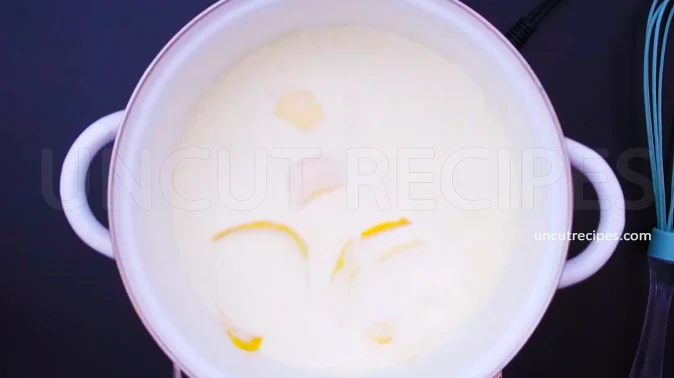
03 - Now, turn off the heat and let the Milk sit so it can cool down and further absorb the flavors from the Lemon Zest and Vanilla Pod. Patience is key here – the longer you let it sit, the more flavorful your custard will be!
04 - Back to the Egg Mixture: Now it's time to sift in the Starch. Make sure you mix it thoroughly until all the lumps are gone and the mixture is completely smooth. This step ensures that your custard will have a nice, thick consistency.
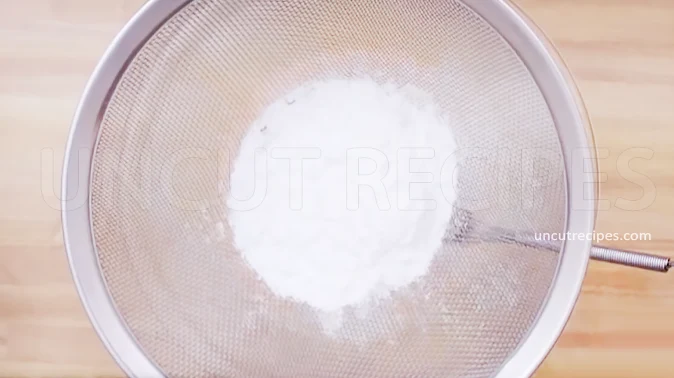
05 - Combine Milk and Egg Mixture: Take some of the warm Milk you've prepared in Step 03 and gradually pour it into the Egg mixture, mixing well as you go. This step is called "tempering" – it helps prevent the eggs from scrambling when they come into contact with the hot milk.


06 - Merge Everything Together: Pour the Egg mixture back into the pot with the Milk, and remove the Lemon Zest (and Vanilla Pod, if used). You're almost there!

07 - Cook Your Custard: Put your pot back onto a very low heat and cook your mixture until it becomes a thick Custard. Remember to stir your cream continuously for about 5-10 minutes, or until it reaches your desired consistency. Constant stirring prevents the custard from burning or sticking to the bottom of the pot.
08 - Chill the Custard: Once done, transfer your Custard into a bowl and cover it with cling film. The Cling film MUST touch the custard cream. Let it cool down first at room temperature, and then place it in the fridge for an extra hour. The cooling process will further thicken your custard and enhance its flavors.
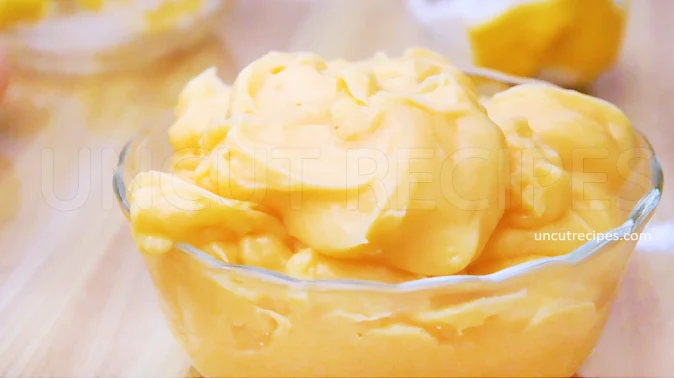
Notes:
Cornstarch: Cornstarch is crucial for achieving the thick consistency of the custard. If you don't have cornstarch, you can use flour as a substitute, but it may result in a less silky texture.
Lemon Zest: Make sure you are only getting the yellow outer layer when zesting your lemon. The white layer underneath (the pith) is very bitter.
Cinnamon: Some people enjoy adding a pinch of cinnamon at the end for extra flavor, or a cinnamon stick during Step 3 to infuse the milk.
Richer Texture: For a richer, creamier texture, you can reduce the amount of milk and add an equal amount of double cream.
Cooling: It's essential that the cling film touches the surface of the custard while it cools to prevent a skin from forming. Ensure there's no air between the plastic wrap and the cream.
Storage: Store the custard in the refrigerator if not using immediately. It should be used within 2-3 days.
Reheating: If the custard has become too thick after refrigeration, it can be thinned out by whisking in a bit of milk while reheating on low heat.
Usage: This custard can be used as a cake filling or served alongside desserts. Make sure it's fully cooled before you use it as a filling, or it might melt the icing on your cake.
Making Ahead: Custard cream can be made a day ahead of time. Remember to cover it with cling film, touching the surface to prevent a skin from forming, before refrigerating.
Freezing: Although possible, it's generally not recommended to freeze custard cream as it can alter its texture upon thawing.
Nutritional Information
( Per Portion )
|
Calories |
185 kcal (9.25%) |
| Total Carbohydrate | 29.3g (22.5%) |
| Cholesterol | 195mg (65%) |
|
Total Fat |
4.8g (7.4%) |
| Saturated Fat | 2.2g (11%) |
| Polyunsaturated Fat | 0.8g (5%) |
| Monounsaturated Fat | 1.5g (9.4%) |
| Trans Fat | 0g |
| Fibers | 0.2g (0.8%) |
| Protein | 6.1g (12.2%) |
| Sugar | 25g (100%) |
|
Vitamin A |
265 IU (8.83%) |
|
Vitamin B1 (Thiamin) |
0.05mg (4.17%) |
| Vitamin B2 (Riboflavin) | 0.3mg (23.08%) |
| Vitamin B3 (Niacin) | 0.2mg (1.25%) |
| Vitamin B5 (Pantothenic Acid) | 0.75mg (15%) |
| Vitamin B6 | 0.1mg (7.69%) |
| Vitamin B7 (Biotin) | 5mcg (16.67%) |
| Vitamin B9 (Folate) | 24mcg (6%) |
| Vitamin B12 | 0.45mcg (18.75%) |
| Vitamin C | 4.5mg (7.5%) |
| Vitamin D | 40 IU (10%) |
| Vitamin E | 0.8mg (5.33%) |
| Vitamin K | 0.5mcg (0.42%) |
| Choline | 116mg (21.09%) |
| Carnitine | 3.4mg |
|
Calcium |
188mg (18.8%) |
|
Chloride |
104mg (4.8%) |
| Chromium | 6mcg (17.14%) |
| Copper | 0.07mg (7.78%) |
| Fluoride | 4mcg |
| Iodine | 34mcg (22.67%) |
| Iron | 0.7mg (3.89%) |
| Magnesium | 18mg (4.5%) |
| Manganese | 0.01mg (0.43%) |
| Molybdenum | 9mcg (20%) |
| Phosphorus | 138mg (19.71%) |
| Potassium | 249mg (5.31%) |
| Selenium | 9.5mcg (17.27%) |
| Sodium | 66mg (2.88%) |
| Sulfur | 74mg |
| Zink | 0.9mg (8.18%) |
* Percent Daily Values are based on a 2,000 calorie diet. Your daily values may be higher or lower depending on your calorie needs.
** Nutrient information is available for all ingredients in this recipe. Amount is based on available nutrient data collected from all over the internet.
(-) Information is not currently available for this nutrient. If you are following a medically restrictive diet, please consult your doctor or registered dietitian before preparing this recipe for personal consumption. |
| Written by: Uncut Recipes | Disclaimer |



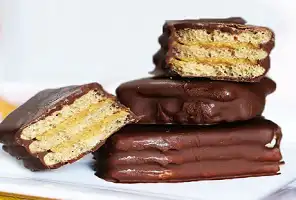
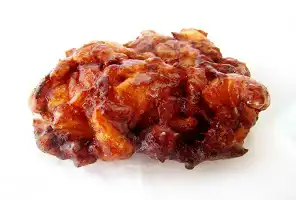

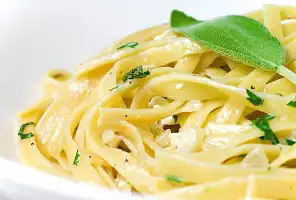
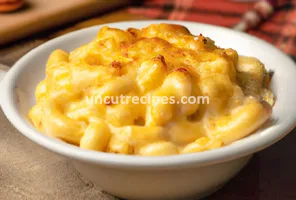
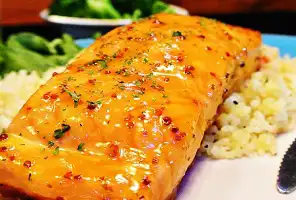

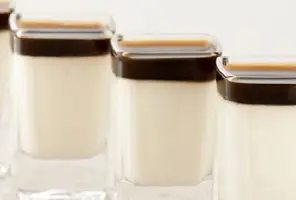
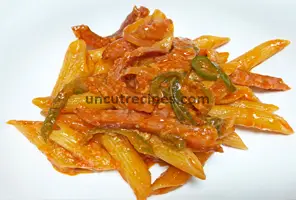

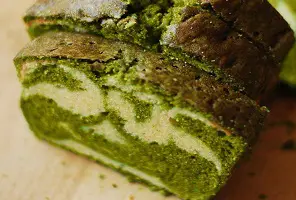
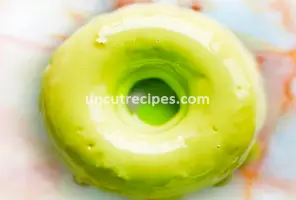
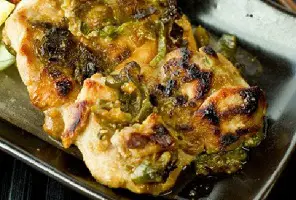
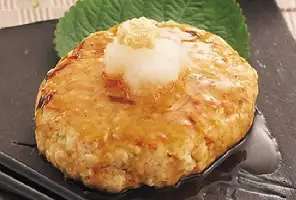

July 08, 2021
I made this last weekend for my chocolate cake and it was amazing, really delicious. The batch was a bit too small because I cut my cake into 3 layears and needed twice the amount, my bad, so I filled the other layer with nutella lol we all gained 12 kilos lol